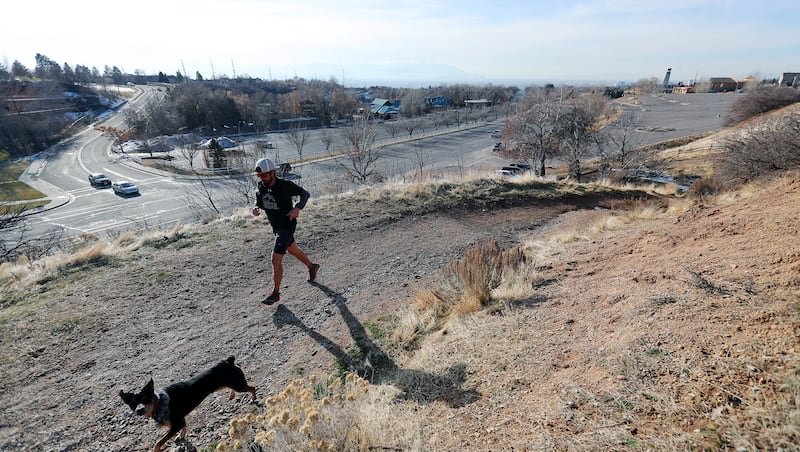I often ran with a friend who brought his dog on our runs, which often took us through a park or in the foothills near our home.
Mia, a border collie/blue heeler mix, would occasionally take off through the trees after deer or rabbits or squirrels. Most times she returned to us fairly quickly, but not always. Sometimes we had to trudge through the brush to find her.
Chasing wildlife is a natural but frustrating part of running with a canine companion. So, what can you do about it?
One key to successfully training not to chase is to teach your dog to curb their chasing impulse before it starts, according to the American Kennel Club. But if your dog is already chasing something, don’t chase after it. It will only encourage your dog to think you are playing — and that will likely prolong the chase.
Though it might seem counterintuitive, giving your dog opportunities to safely practice predatory behaviors can help you get them under control, according to an article in Outside magazine.
Suppressing predation can leave dogs with pent up frustration, making them more likely to run after that rabbit and tear the leash from your hand, Tracey McLennan, a dog trainer specializing in “prey drive,” told Outside. Prey drive describes a canine’s motivation for predatory behavior, which she said is deliberately bred into many dogs.
“I think that a lot of people are going around with dogs with desires through the roof because they never have an outlet,” McLennan said.
Training day
Here are some suggestions for keeping your dog from chasing wildlife gleaned from Outside and the American Kennel Club:
- Most dogs love scent training, which can be as simple as hiding your pet’s treats or toys for them to sniff out or tossing their kibble into grass or a snuffle mat.
- For dogs that love chasing or have excess energy, tug provides mental and physical exercise. It’s also a great way to teach and reinforce your impulse-control training.
- Some dogs enjoy dissecting prey, so providing opportunities to chew and shred can help meet that need. It can include letting them tear apart toys or cardboard or lettuce leaves if they are prone to swallowing the pieces.
- Bring a handful of treats on a run and reward your dog for staying near you and ignoring distractions.
- Consider using a canicross harness connecting you to your dog on trail runs, allowing the dog to run ahead and maybe even give you a pull.
New dog, basic tricks
Teaching your dog basic obedience commands will create a foundation for harmonious runs. A pet well-versed in “heel,” “come” and “stay” will be more manageable in all situations, including around wild animals, Rachel Laurie Harris, a dog trainer who often hikes with her two American Staffordshire terriers in Colorado, told Outside.
Mastering those skills might seem impossible when your dog can only think about rabbits. But breaking each skill down into small steps and getting in a lot of successful reps can improve your dog’s responsiveness. “As a general rule, if people can spend time bonding with their dog and working on training at home, it’s very likely that that’s going to yield more success with some of the prey drive on the trail,” Harris said.
Teaching dogs to come when called works best when you start somewhere without distractions like your house and reward heavily when your pet runs toward you, per Outside. You can then work up to practicing the same skill in a busier place like a park and using a backup long line to keep your dog from ignoring you.
